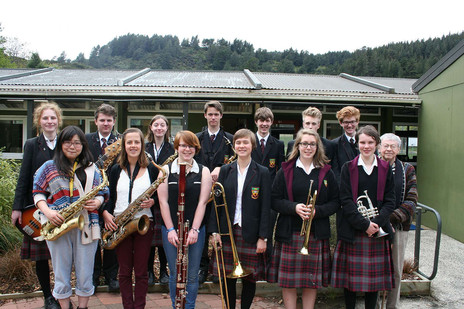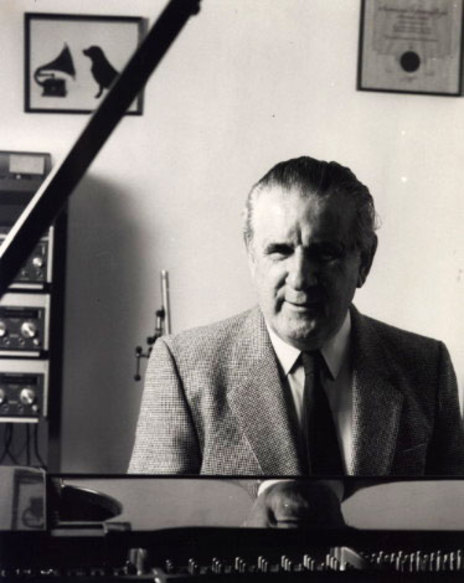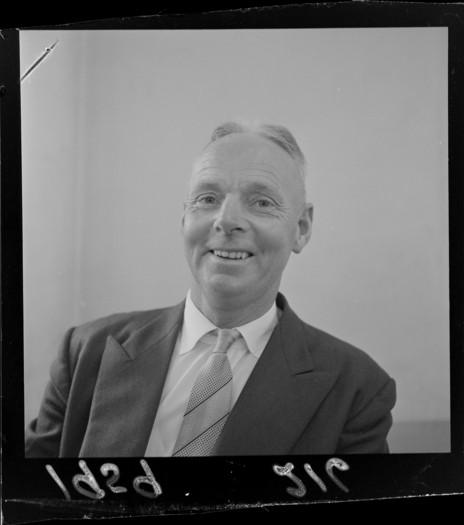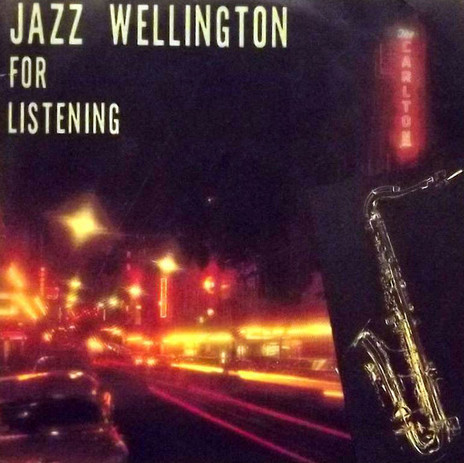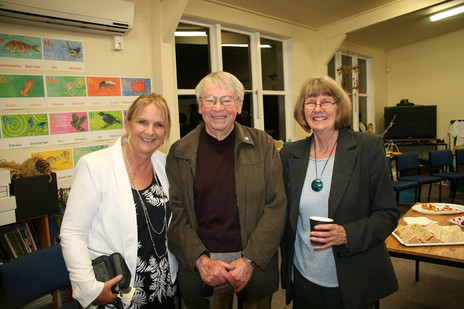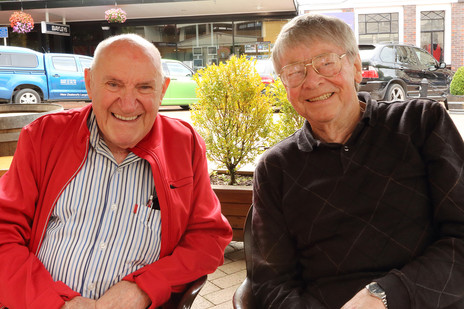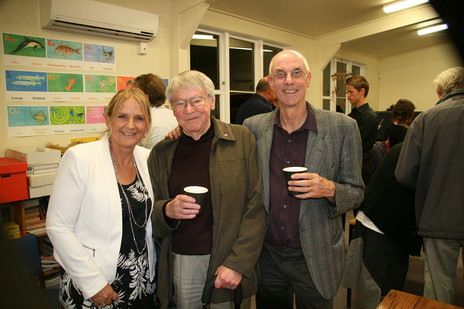Though he was always based in Dunedin, his career would take on international dimensions. He once joked that his touring had seen him play everywhere from a cathedral to a Bangkok brothel. He also performed in Disneyland and at the Montreux Jazz Festival.
He was born in 1932 in Dunedin into a musical family. His mother played piano, as her parents had done, and Calder was encouraged to learn the instrument from an early age, though his grandparents’ staunch Baptist beliefs meant that jazz – “the devil’s music” – was frowned upon. “My grandmother thought I was on the road to sin,” he told the Otago Daily Times in 2001. “But then I started playing in a radio band and she thought ‘Well, it can’t be all that bad if he’s playing on National Radio.’”
He discovered jazz while still at primary school, via Arthur “Turntable” Pearce’s Friday night Rhythm On Record radio show, which had been thrilling aficionados and making new converts all over the country since 1937. Pearce’s knowledge of the music was encyclopaedic, his tastes impeccable, and he could be relied on to play the best and most rarefied examples of the dynamic new music.
During World War II, when the great American clarinettist and swing star Artie Shaw brought his big band to New Zealand, Calder persuaded his grandfather to allow him to stay up late to hear them on his floor-standing radio.
By the end of the war Calder was boarding at Waitaki Boys High in Oamaru. Radio remained his lifeline, he explained to Chris Bourke in a 2006 interview. Though the jazz didn’t start until after 10pm, by which time all the boys were supposed to be in bed, he bucked the prefects and house master’s rules. “It was allowed – or not allowed, I just took it – that I stayed up and listened to the jazz.”
He became familiar with the different regional line-ups that performed on air on different nights of the week. A regular on Christchurch’s 3YA was Martin Winiata and his band, with singer Coral Cummins. By the time he was 17, Calder was travelling to Christchurch on weekends to hear them playing dances on Saturday nights. He would also visit the radio studios where the groups practised, not daring to dream that he would one day be playing on the air himself, let alone with some of the musicians he admired.
As a teenager he visited radio studios, not daring to dream he would one day play on the air himself
At school he made his first forays into performance, playing trumpet with the school brass band, and drums and piano with nascent dance groups. Though he didn’t yet think of himself as a jazz pianist, he learned a few popular tunes such as ‘In the Mood’ and ‘The Sheik of Araby’ and formed a trio with a drummer and clarinet player.
On leaving school he began to get work at Joe Brown’s Saturday Night Dances, a Dunedin institution launched during the Depression by the Otago entrepreneur whose career would span six decades and encompass talents quests, Miss New Zealand beauty contests, and his own record label.
Working for Brown in those days meant mastering a big repertoire of popular dance tunes, both new and old. The modern dances were foxtrots and pop tunes of the day; the old-time dances went back to the start of the century: the valeta, the maxina, the Albert, gypsy tap and military two-step. “The point was that they were set dances, usually in the frame of eight bars, so anybody could dance with a minimum of effort. They were all good social dances.”
Musically, though, Calder found the dance repertoire restrictive. “As a jazz muso, or a wannabe jazz muso in those days, I wasn’t very fussed on those sorts of things.”
Radio continued to be another source of work for local dance bands and Calder began play with some of them. He would often work with expatriate Australian bandleader Dick Colvin, who worked at Begg’s music store so had access to all the latest orchestrations. For a while Calder marshalled one of two sets of keyboards in a twin-piano band led by Malcolm Chisholm; the other pianist was Jimmy Wilson. “Jimmy was the sort of guy who would read ‘Bumble Boogie’ by sight and upside down, sort of thing. He was a marvellous pianist. He’d play all the frills and things and I played the rhythm.”
Another musician he worked with often and held in high regard was Keith Harris: “One of the jazz musicians to come out of Dunedin. Keith was [on] clarinet for a start, and then alto and tenor [saxophone], and he went right through and into the rock era. That's why he picked up tenor and flute. But he loved Benny Goodman and he used to do Goodman and Shaw stuff.”
the man Prescott would unequivocally call his mentor was Julian Lee, the blind, Dunedin-born virtuoso
But the man he would unequivocally call his mentor was Julian Lee. The blind Dunedin-born multi-instrumentalist had made his name in Auckland and ultimately in America, but periodically returned to his hometown, at one point to lead a radio big band. Working with Lee was, for Calder, a masterclass in musicianship and arrangement.
“I was very lucky that he got me to play piano. Because he was blind, I got the job of actually writing out all the parts for him from his arrangements, and you can imagine I learned a lot.
“He would Braille out the rough outline and then say ‘Right, first trumpet – a minim, couple of dotted quarters, B flat, C. Right, do that to the end. Second trumpet, do do do, third trumpet, do do do, fourth trumpet ... oh what did I write for the second trumpet in that bar?’
“I’d have no hesitation to ask, ‘Why did you do that, Julian?’ Any questions I had he’d tell me the answers as far as arranging is concerned, and he really put me on the right track. He had it all up here as well. He would play the lead trumpet from memory.”
Calder recalled an example of Lee’s extraordinary aural sensitivity. One day they were walking together through Dunedin, absorbed in conversation. Calder had mentioned a particular shop he wanted to visit. “We were just walking along, talking. I was holding his arm or he was holding my arm. Next minute he said, ‘Calder, don’t you wanna go in there?’ We were right outside the place. I said, ‘How do you know these things?’ He says, ‘I hear the echoes.’
“The only time I remember he was stumped was when we had a snowfall and he couldn’t get to the studio in time because he couldn’t hear, he didn’t know where he was.”
Calder married Lesley in 1956, and they would have four children. Fortunately she was a jazz lover too, though her preference was for singers – Frank Sinatra, Susannah McCorkle, The Hi-Lo’s – while Calder favoured pianists such as Oscar Peterson and George Shearing and bandleaders, among them Artie Shaw.
By day he worked for the post office, at night he played for dances, broadcasts, and wrote charts
By this time he was working by day for the Post Office, while his nights were kept busy with dances and broadcasts. “We had a young family, I was doing a radio band and I was earning more money from the radio band than I was at the Post Office, and I was in a relatively good job – a grade five clerk at the engineers office. I did that five days a week and I sat at home and wrote arrangements. I had to write three charts a week, and we would rehearse on a Tuesday night and we’d do it live on the Friday, and I would sometimes be up all Monday night writing those last parts and go to work as well because I knew very well I couldn’t say, ‘Well look hey, I’m feeling a bit tired today I won’t bother coming in.’ You know, you accepted a job, you did it!”
In those unsophisticated days of six o’clock closing, dances were nominally teetotal affairs. “The law was that you weren’t allowed to have open liquor within, I think it was, 100 yards of a dance. The women used to bring it in because they weren’t as quickly searched. You could have it at a private function, weddings and things, of course. But in those days we had that horrible mentality where you get as much booze in you by 6pm. But I do remember one funny incident. We were playing for this tennis club function, something like that at the Gold Room, and they were having a wine and cheese evening. Now I think most of them had been to the pub as well for their normal 5 till 6, and we played and then the supper came, and they had them out on these trestle tables and I’ve never seen such a mess, people were collapsing because they were drinking this wine as though it was beer, they were being sick on the table and collapsing it. It was upstairs and there was a wide stairway to go down and you had women and men sprawled out on the stairs with vomit here and vomit there. I’ve never seen anything as bad in my life before.”
One night he found himself accompanying Australian singer (and older half-sister of Helen Reddy) Toni Lamond, who happened to be in Dunedin on her 21st birthday and was celebrating. Lamond would astonish him some 30 years later by recognising him in a Sydney club where he had gone to hear Julian Lee.
He would also accompany touring entertainers such as Howard Morrison or Eliza Keil, the latter offering an object lesson in professionalism. Having been told by some other musicians that Keil was difficult to work with, he approached the trio gig with his usual preparedness, and a little trepidation. The gig went smoothly and, contrary to the warnings, Eliza was a good-natured delight.
“I went up to get her for the next show,” Calder remembered. “And I said, ‘By the way, I’ve heard that I should be scared of playing for you. What gives?’ And she said, ‘Well look Calder, you don’t have to worry but do you realise, I’ve had to put up with the worst things? I went to play this gig, there was this set of musicians who told me, no we don’t know those [songs], and they were suggesting things that they knew, that I should sing. Well I walked out. Of course I did!’”
Prescott formed the Logan Park High School Big Band in 1983, and it became a training ground for Dunedin jazz musicians
By the 70s the social landscape had changed. The relaxing of licensing laws meant pubs had become the most common music venues. Radio was no longer a haven for dance bands. Calder began teaching music at Logan Park High School and in 1983 formed what is believed to be the first school big band in the country. It became something of a training ground for Dunedin jazz musicians and he would continue to lead it for the next 32 years.
In 1988 he formed the Dunedin City Jazz Orchestra, an outgrowth of a series of summer schools he and Lesley had organised in Alexandra. It was a full big-band: four trumpets, four trombones, four saxophones plus bass and drums and, naturally, his own piano. Calder wrote many of the arrangements; others came from American arrangers he corresponded with, and a few from Johnny Dankworth, who he had met and become friends with during one of the pianist’s New Zealand tours with his wife Cleo Laine.
The Orchestra would practise every Monday night and were soon playing the country’s major jazz festivals, followed by festivals in Australia, the West Coast of the United States, and ultimately the Montreux Festival in Switzerland. Having got the entire big band to Switzerland, it was a relatively small step on to London, where they had been invited to play a one-off show for expatriate New Zealand entrepreneur, philanthropist and jazz producer Michael Watt. The band was honoured lavishly by Watt, and treated to further hospitality at the Dankworth/Laine home. “Cleo kept all her awards in her loo,” Calder remembered. “She said she liked all her visitors to see them.”
Back in Dunedin, he would stay in regular work with various smaller ensembles such as The Dunedin South City Six Dixieland Band, and the Calder Prescott Jazz Quartet, which he formed with Mike Gibbs after the former NZSO trumpeter retired to Dunedin. The group began its longstanding Thursday night residency at the Robbie Burns Bar in 1997.
He would continue to teach, play and broadcast jazz for the rest of his life. Although he was appointed a Member of the New Zealand Order of Merit (MNZM) in 2001 for services to music, he remained modest about his achievements and contribution. As he explained to Collette Jansen on RNZ’s Jazz Footprints programme in 2014: “Jazz music is, and has been, all my life. It’s taken me round the world a couple of times and I believe I’ve got to give it back. By teaching young – and older – people about jazz, I think I’m doing my best to help jazz as a whole.”
